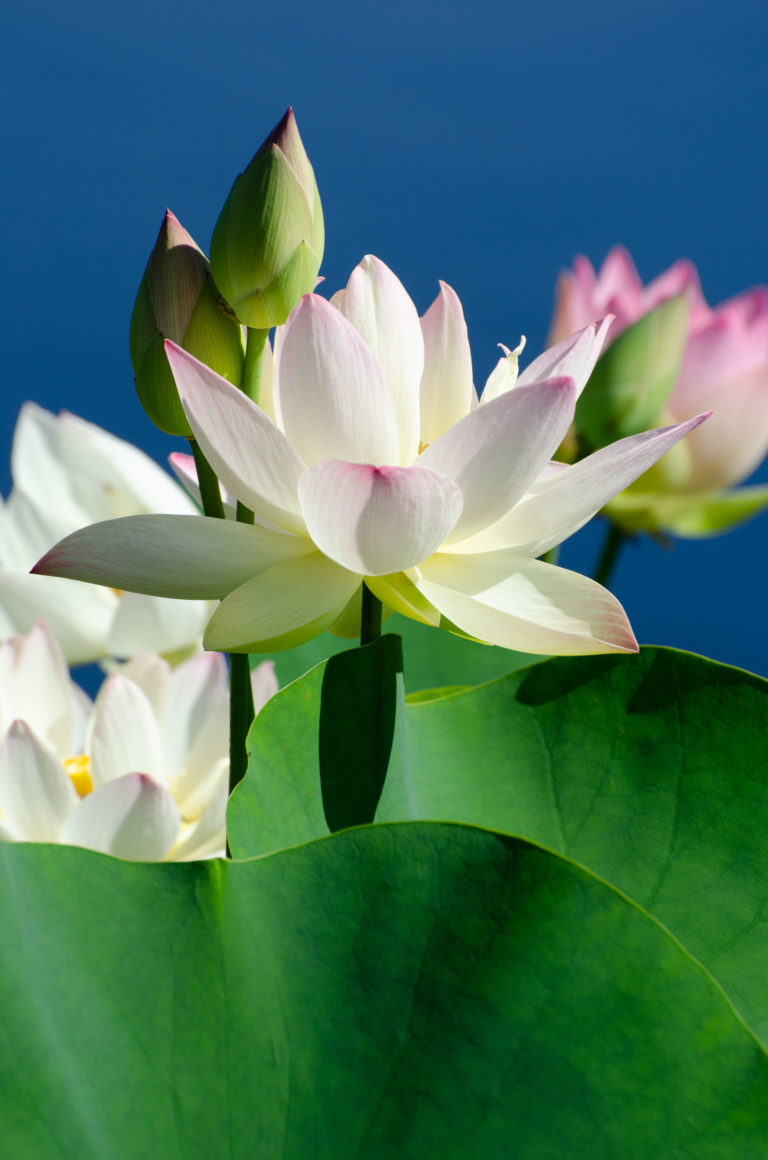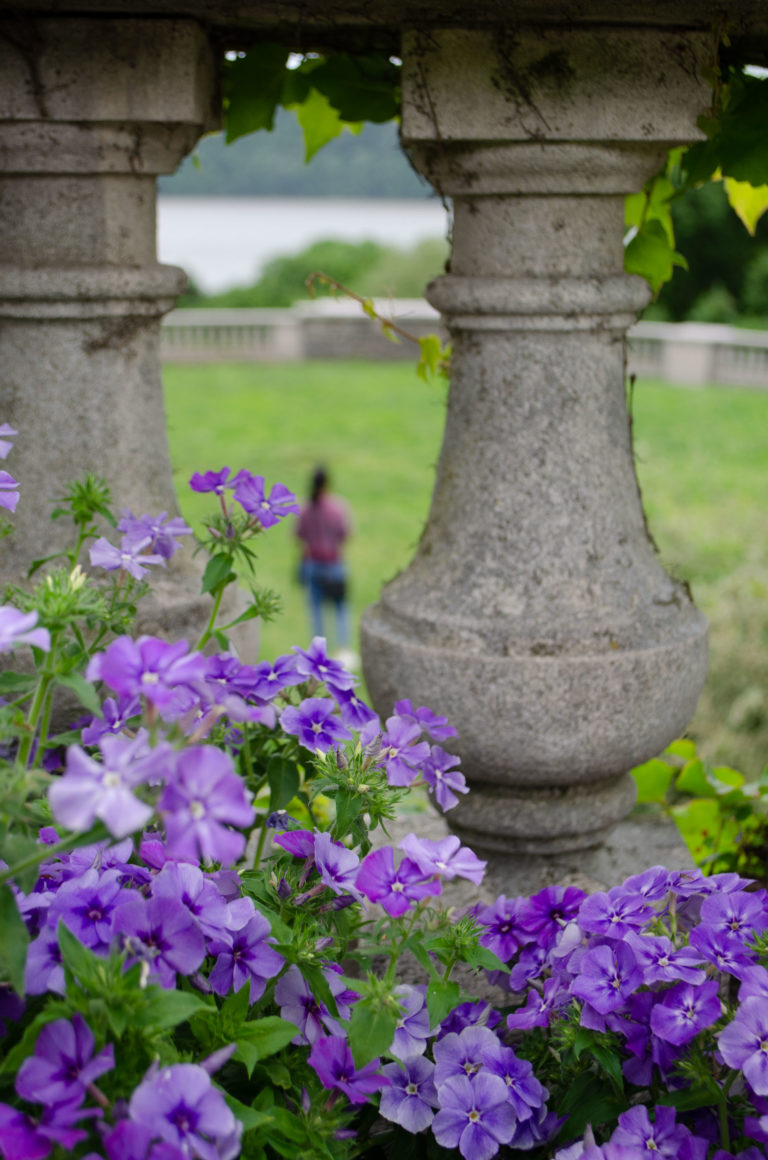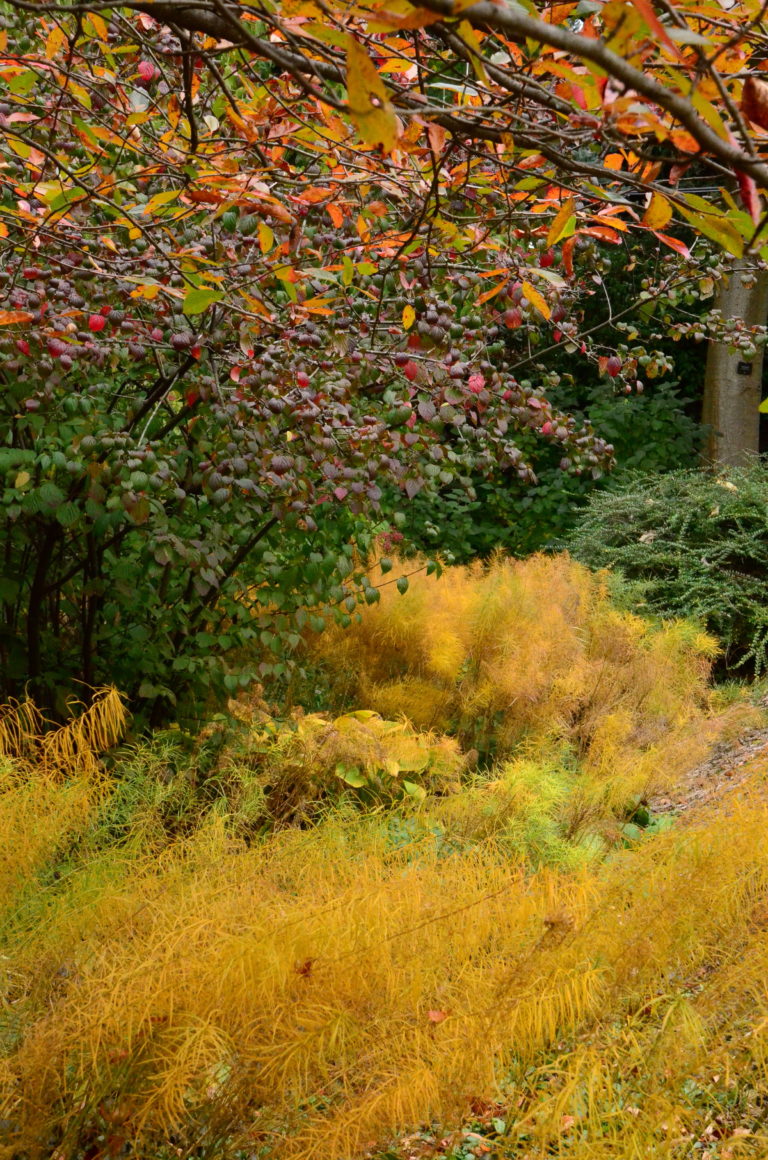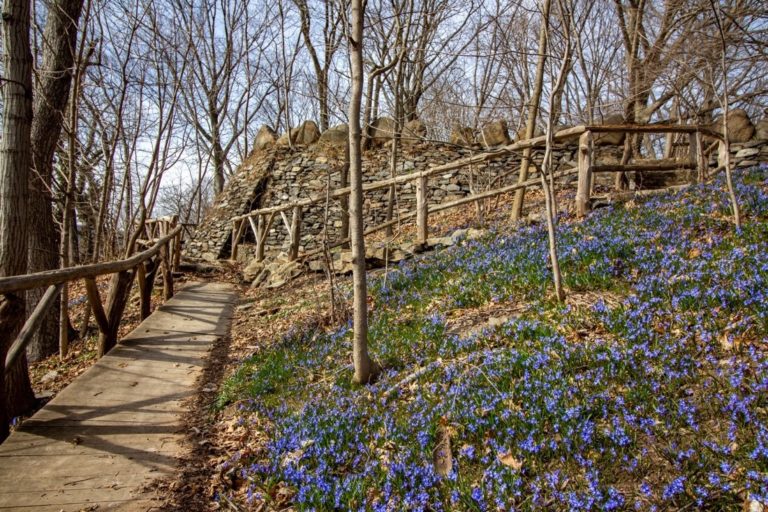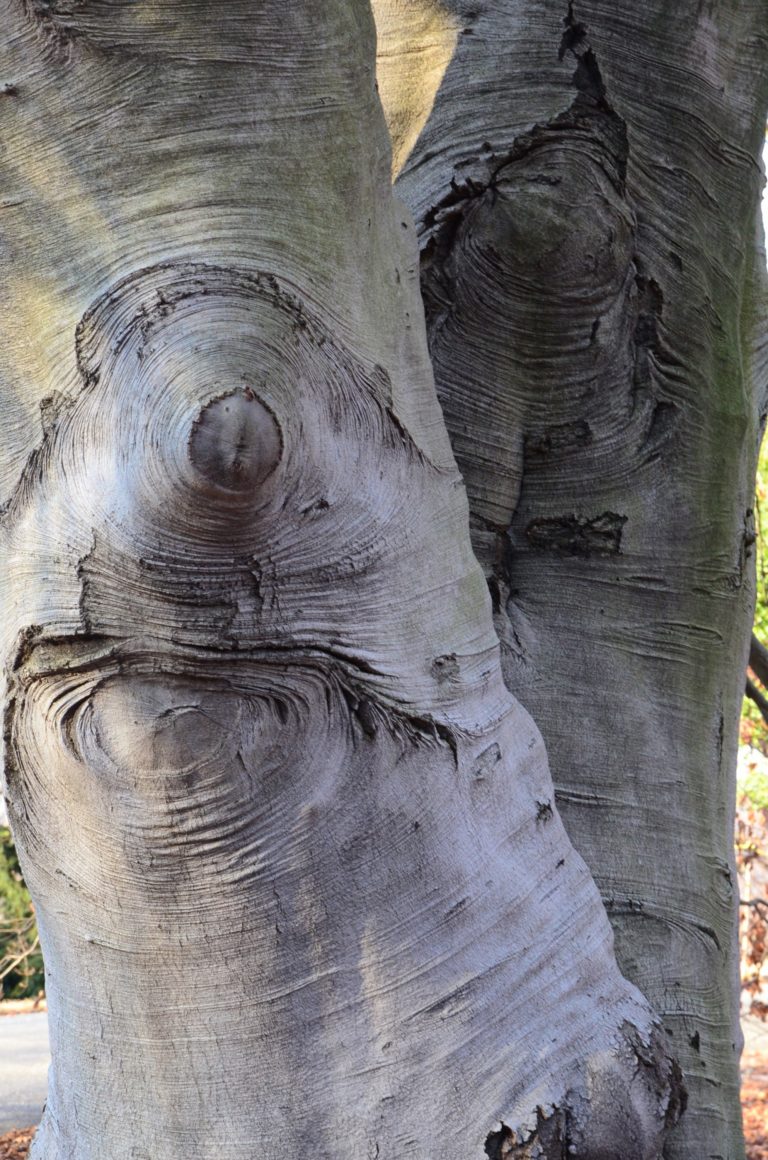
Bark Portraits
January 12, 2024A sensory experience I encourage in the Garden, is a gentle touch of bark. Using fingertips, I gently trace the grooves and ridges, the topography of a trunk, and in doing so I create a connection with the tree and heighten our moment together. It is a little sensual if I do say so myself, hah!
At Wave Hill, where you may walk on the grass (but not in garden beds please), visitors can get close to many of our impressive tree specimens. Fagus sylvatica ‘Atropurpurea’ (European copper beech) is one such tree that attracts the fingertips and even arms of visitors as they stroke this giant tree’s thin bark and embrace its massive trunk in a hug.
What is bark? Simply put, bark is a layer of lightweight dead cells that acts as armor and protects the tree from drying out. As the tree ages, the circumference of its trunk expands. That expansion causes bark to do all sorts of fun things. Some bark, like the European copper beech continues as one entire smooth layer—it will stretch and add more cells, creating fine horizontal lines. Some smooth bark has obvious lenticels which are small pores for gas exchange—these markings can also stretch, appearing on some species as elongated ovals. Some bark will crack under this expansion which creates furrows or negative space around plates and scales. In time, plates and scales of bark may break off in pieces—puzzle-shaped, strips, chunks and other funky shapes—to be replaced with younger and newer bark.
Look out for these characteristics of bark in the following Bark Portraits.
Cover image: Fagus sylvatica ‘Atropurpurea’ (European copper beech) located across from Glyndor Gallery
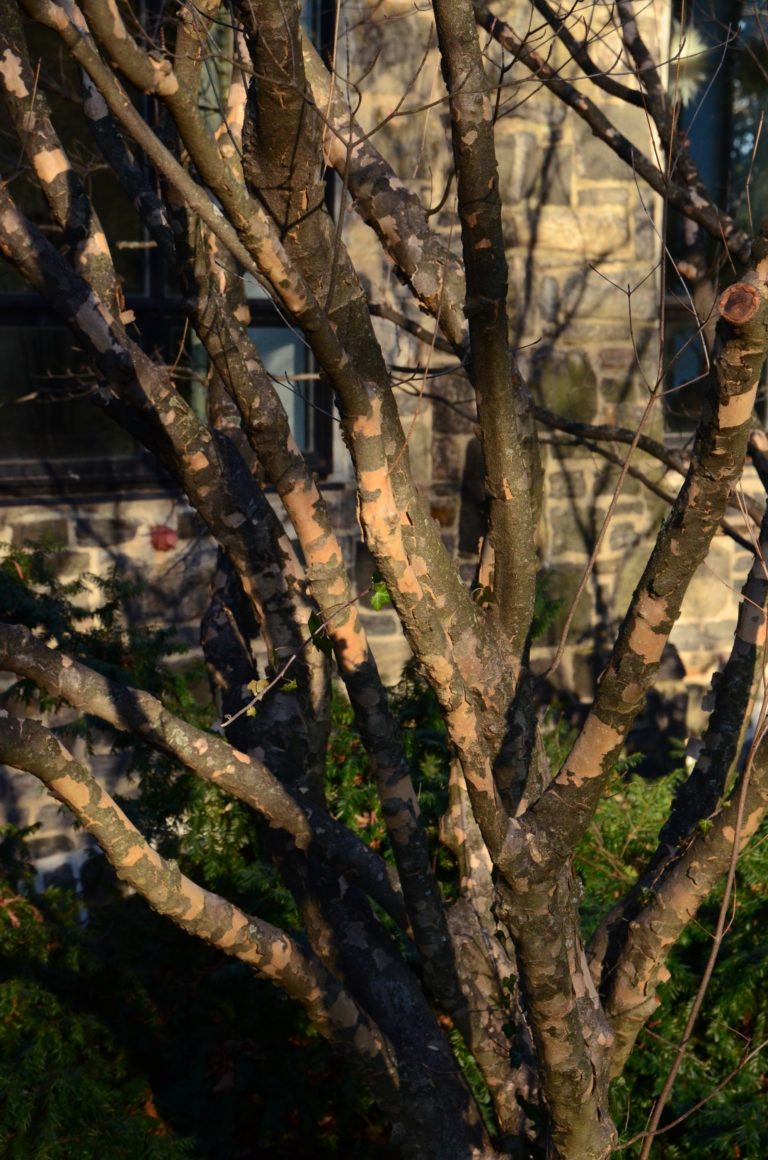
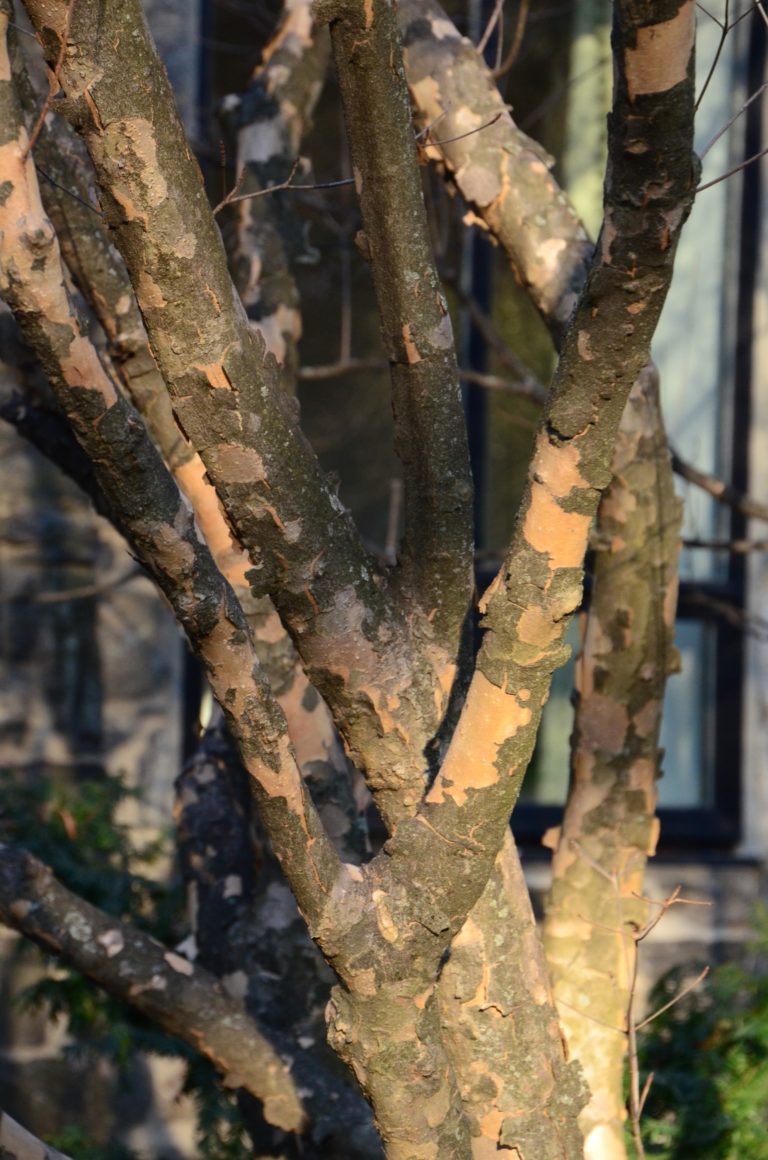
Cornus kousa ‘Gold Star’ (kousa dogwood cultivar) is tucked in front of Armor Hall overhanging the stairs leading into Kerlin Learning Center. Its exfoliating puzzle-shaped bark reveals brighter and younger bark below. The underlying oatmeal colored bark brightens up this dark corner, much like the variegated yellow leaves of this small tree during the summer.
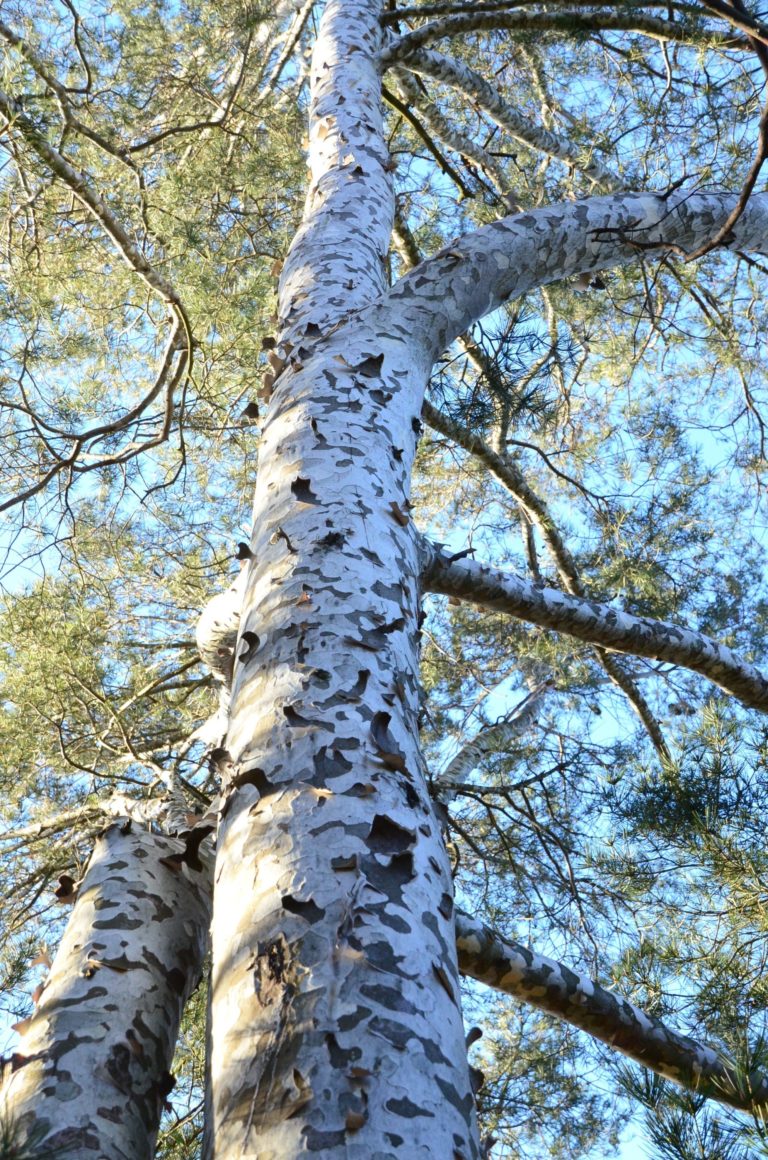
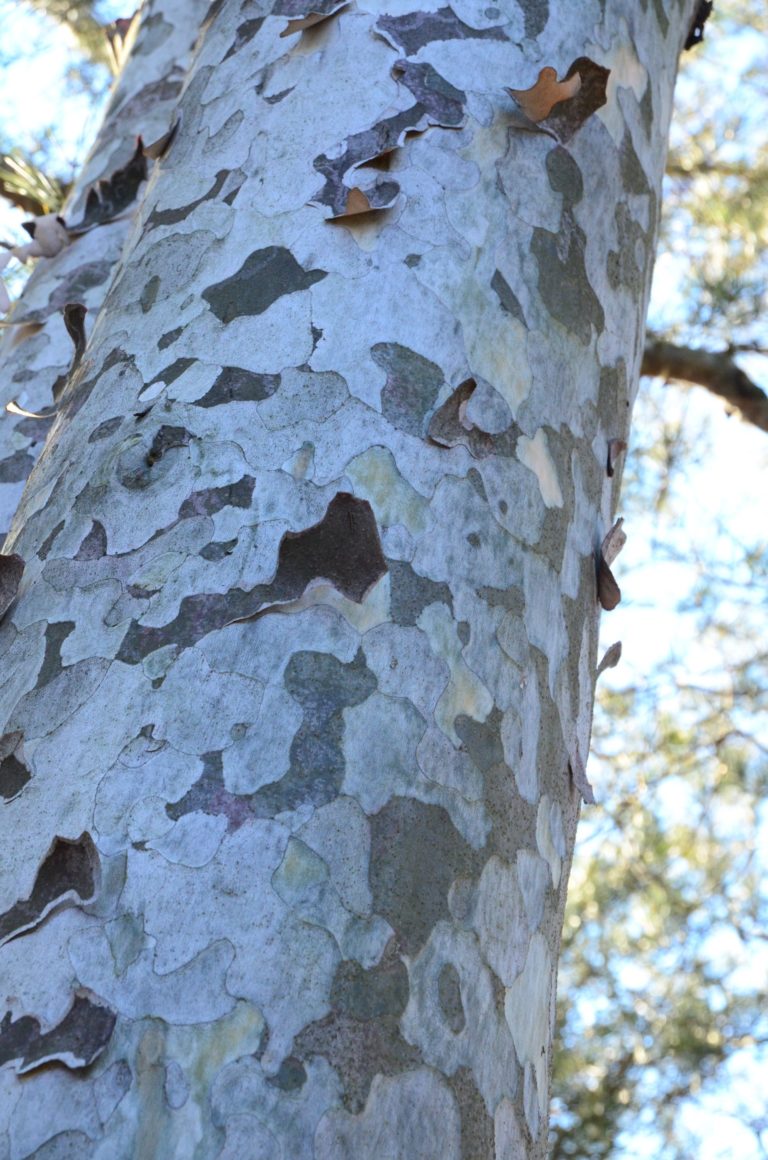
This Pinus bungeana (lacebark pine) predates the creation of Wave Hill as a public garden and is potentially more than 100 years old. Its exfoliating bark naturally breaks off as puzzle-shaped pieces to reveal a gradient of yellow, green and silver undertones. It abuts a pathway leading toward the Aquatic Garden, allowing visitors to get incredibly close to it.
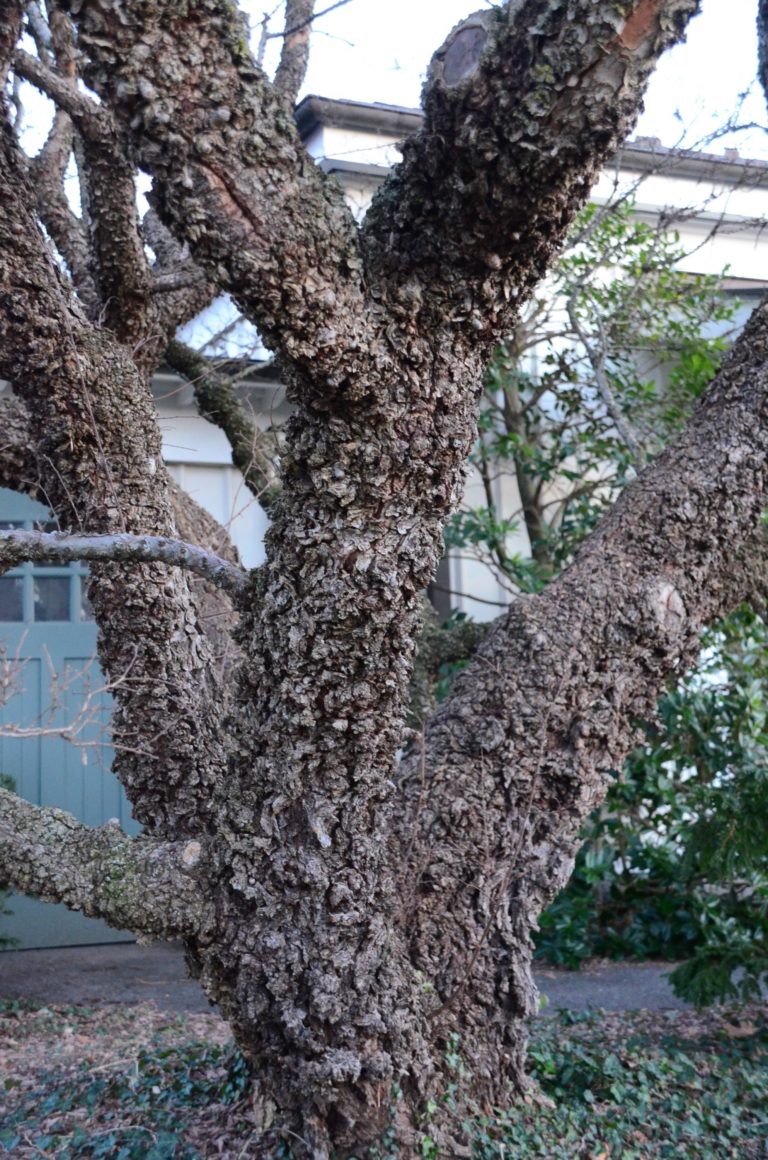
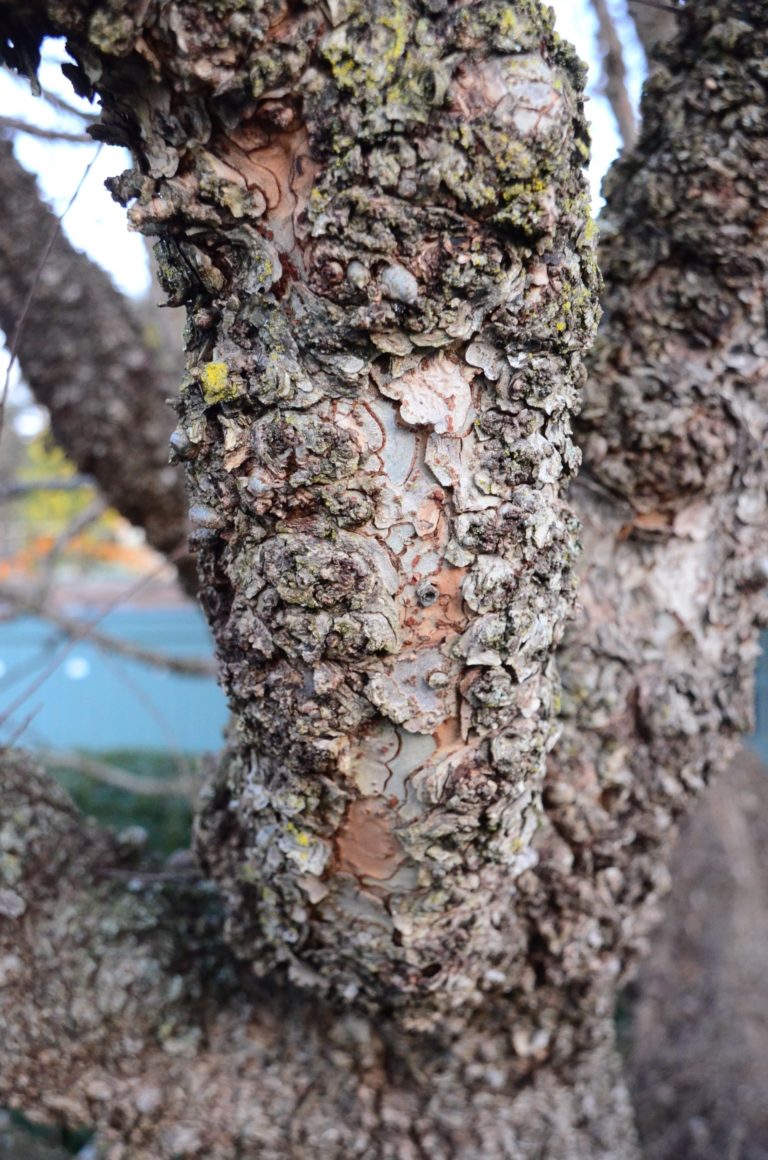
Ulmus parvifolia 'Seju' (Chinese elm) exemplifies the concept of “bark character”. The high surface area of the thick corky bark is perfect for lichen which adds neon notes of green and yellow. When the cork is missing young, mottled terra cotta (orange/brown) and slate (grey) bark peaks through. Find it near the Perkins Visitor Center bathrooms.
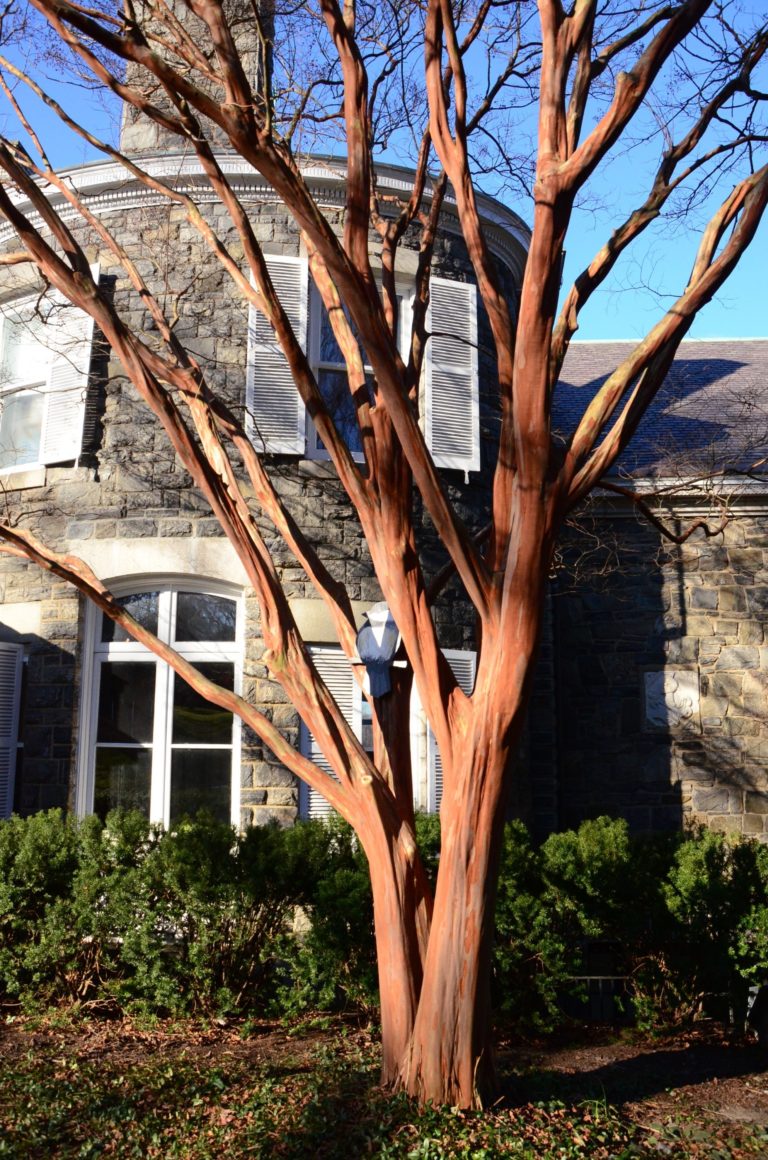
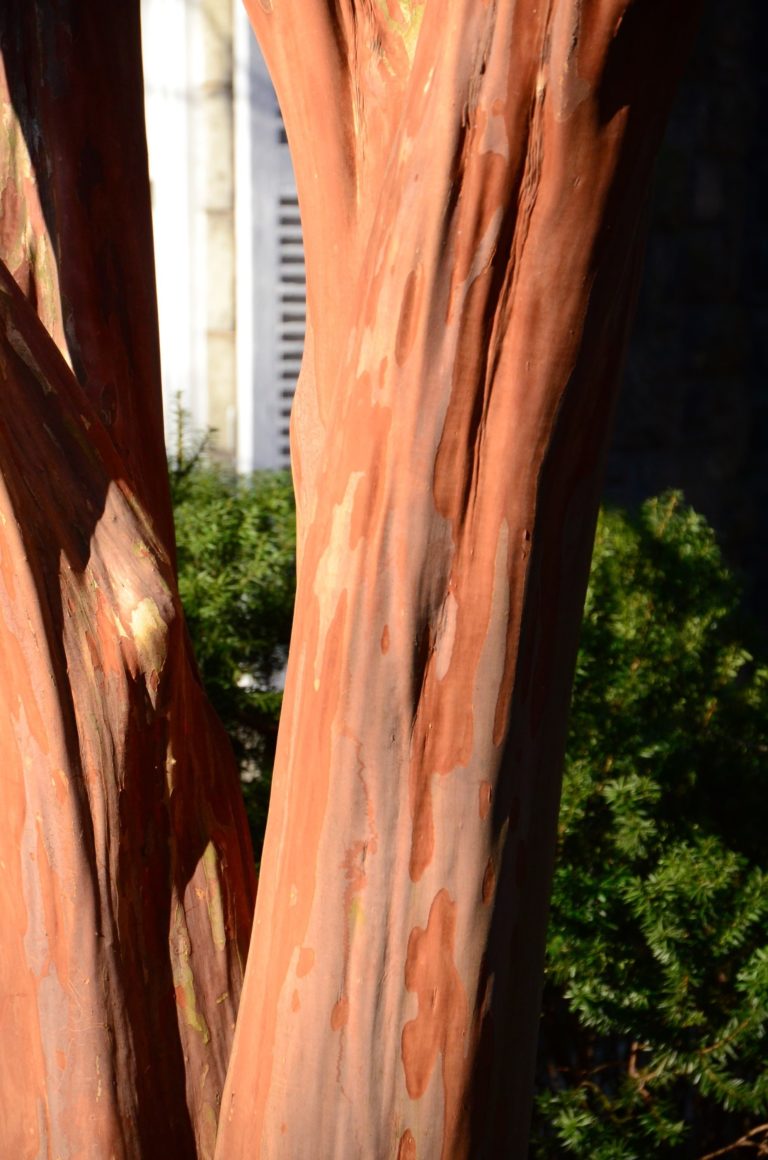
Lagerstroemia × ‘Natchez’ (crepe myrtle hybrid) in front of Wave Hill House makes an obvious statement year-round. Its sinuous limbs, like muscles, have exfoliating bark that reveals longer strips of orange color. Looking like the desert varnish on sandstones of Utah, the striations of orange and brown are from varying ages of bark, not oxidation.
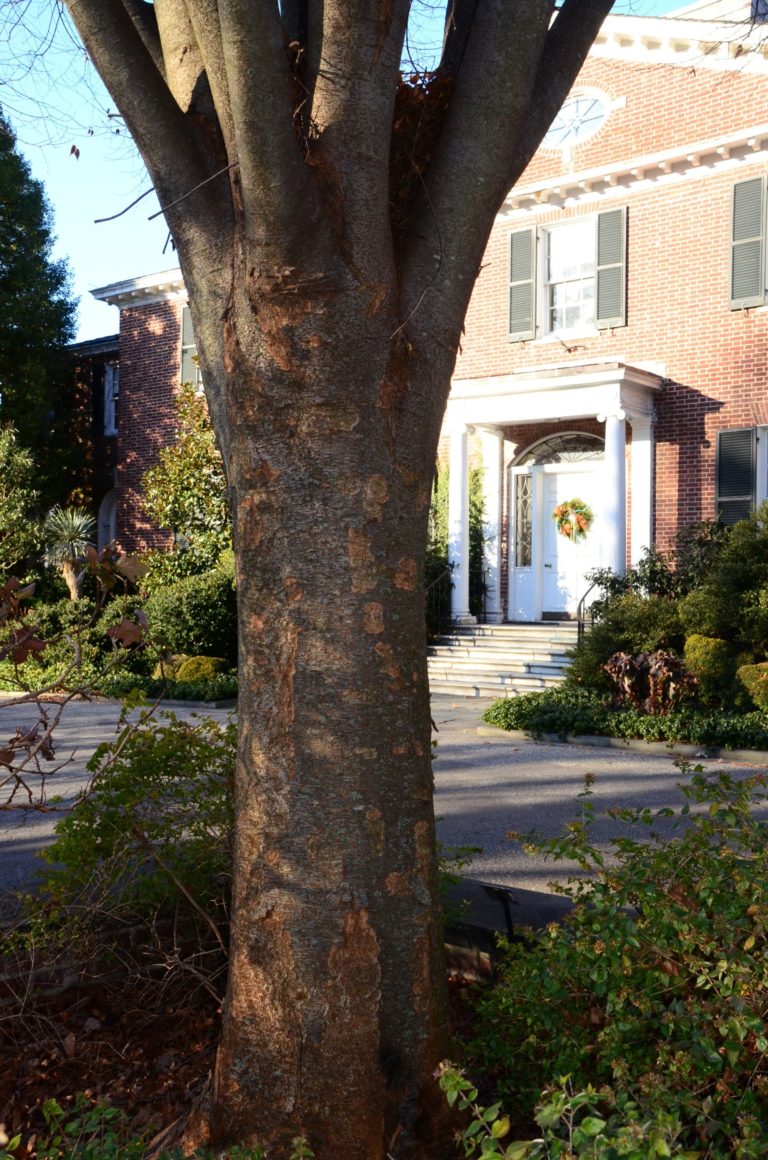
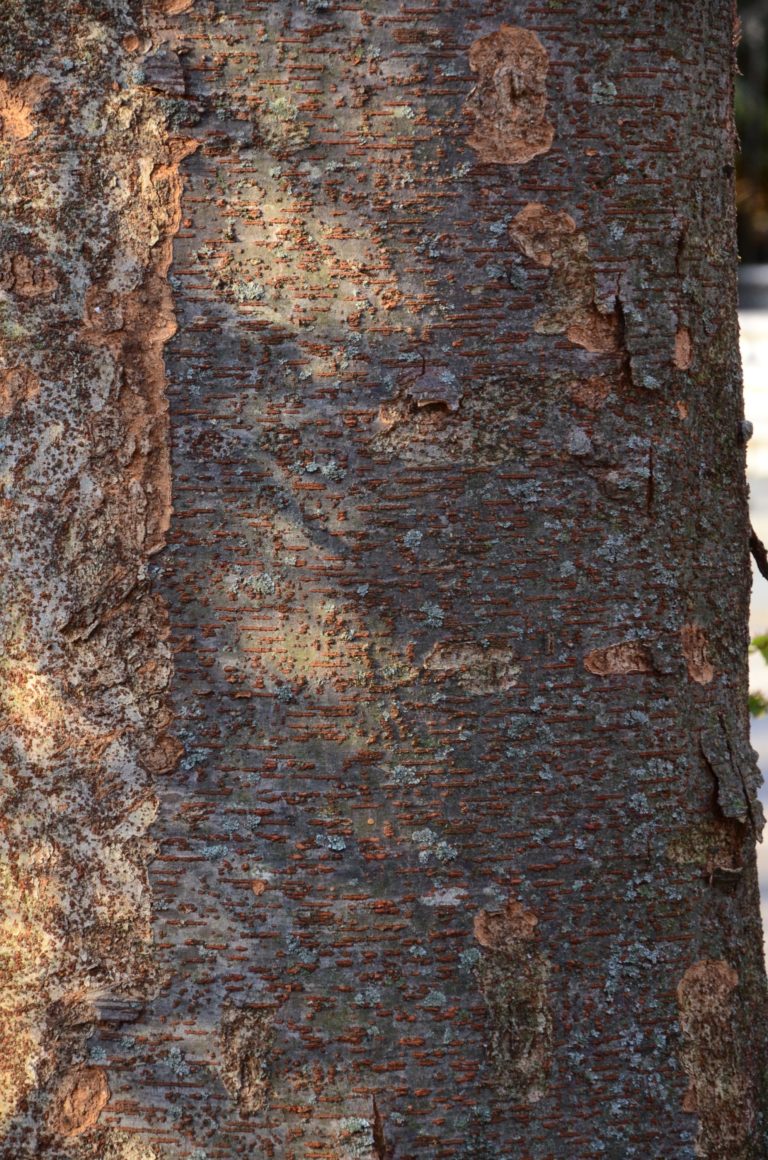
Zelkova serrata ‘Green Vase’ (Japanese zelkova cultivar) is across from the entrance to Glyndor Gallery. Its dark purply bark is adorned with maroon lenticels, which are pores for gas exchange. These conspicuous lenticels are raised and complimented by an interwoven, steel blue-colored lichen.
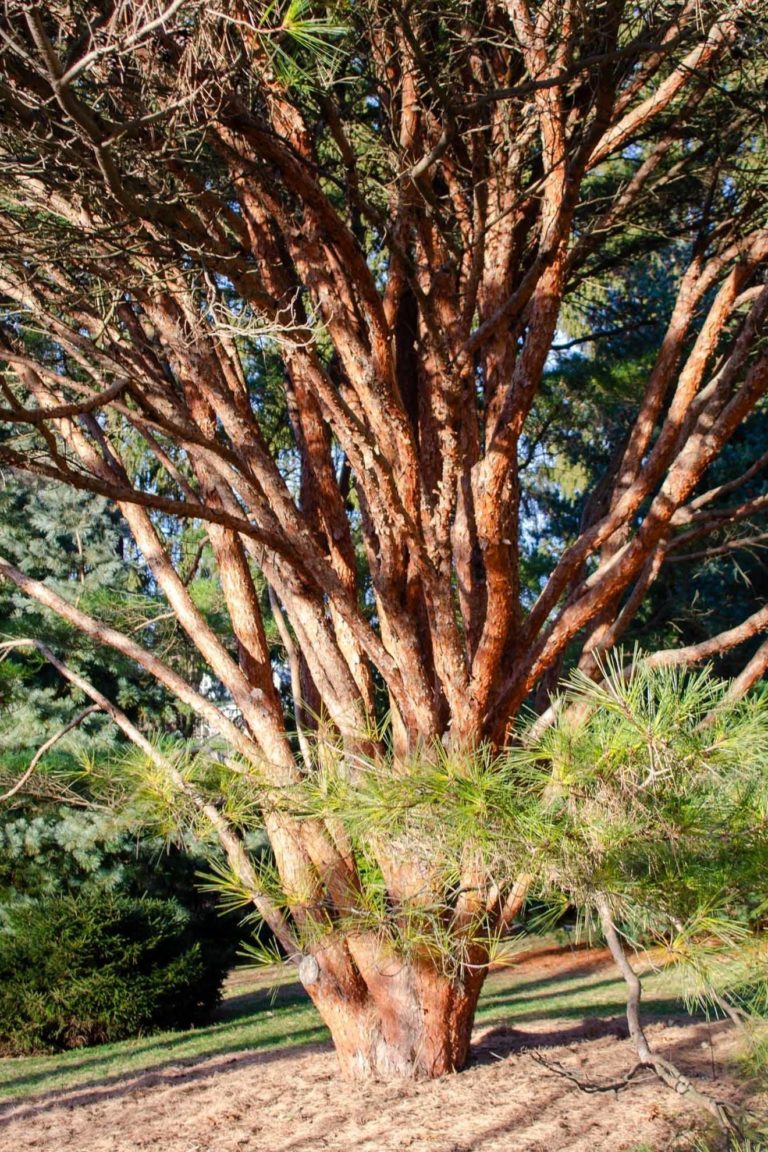
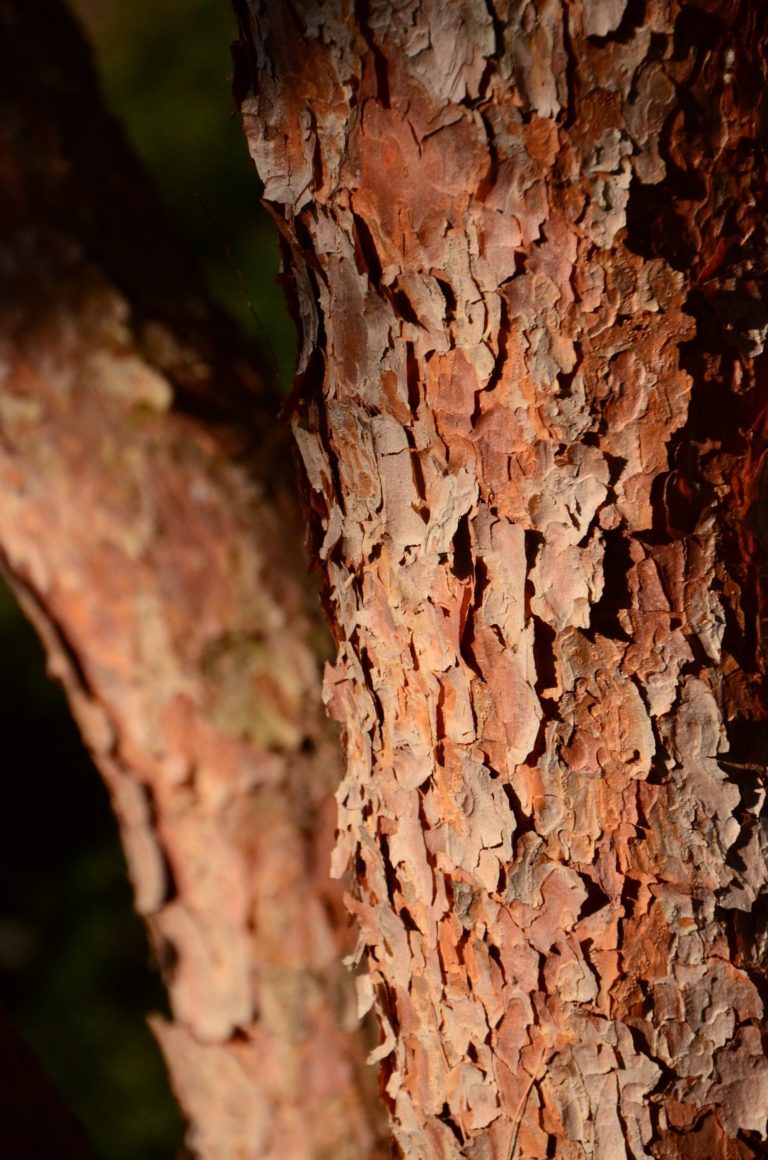
Pinus densiflora ‘Umbraculifera’ is present in the Gold Border and at the bottom of the Conifer Slope. Known as the Tanyosho pine in Japan, this orange-bark pine has delicate thin scales that peel off with age. The scaled bark pieces are thin and densely packed allowing them to catch sun rays, giving off an amber glow.
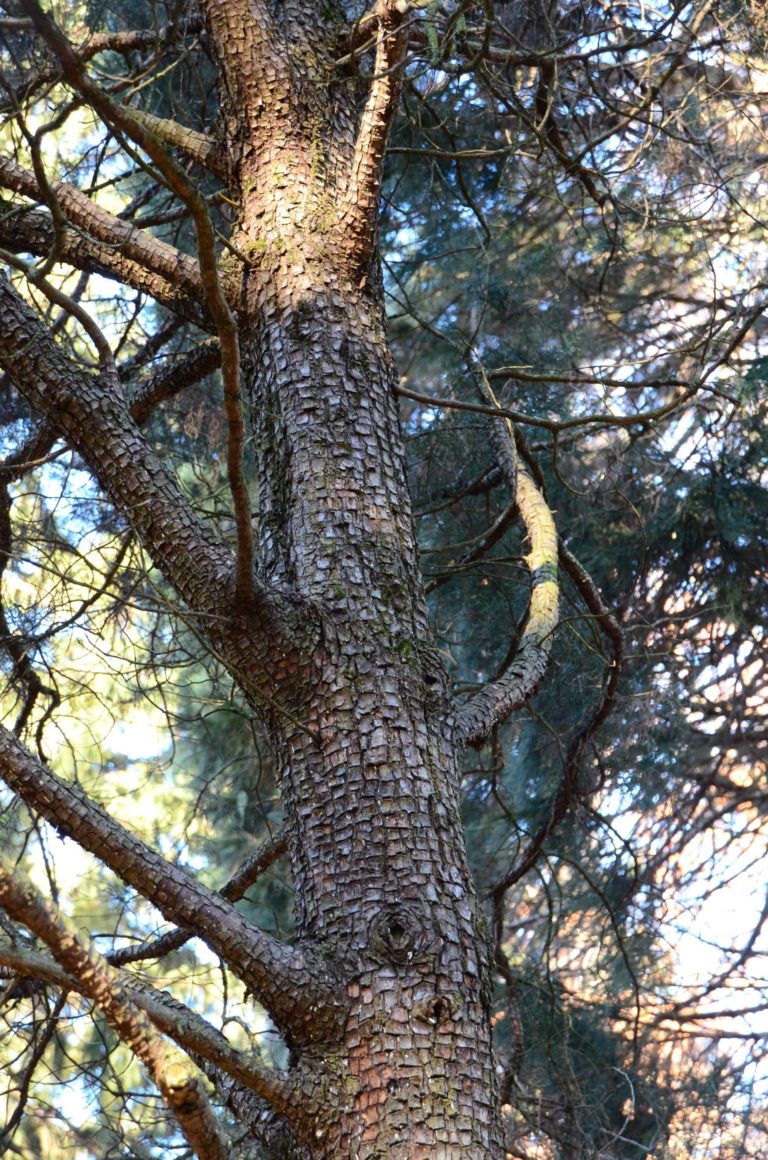
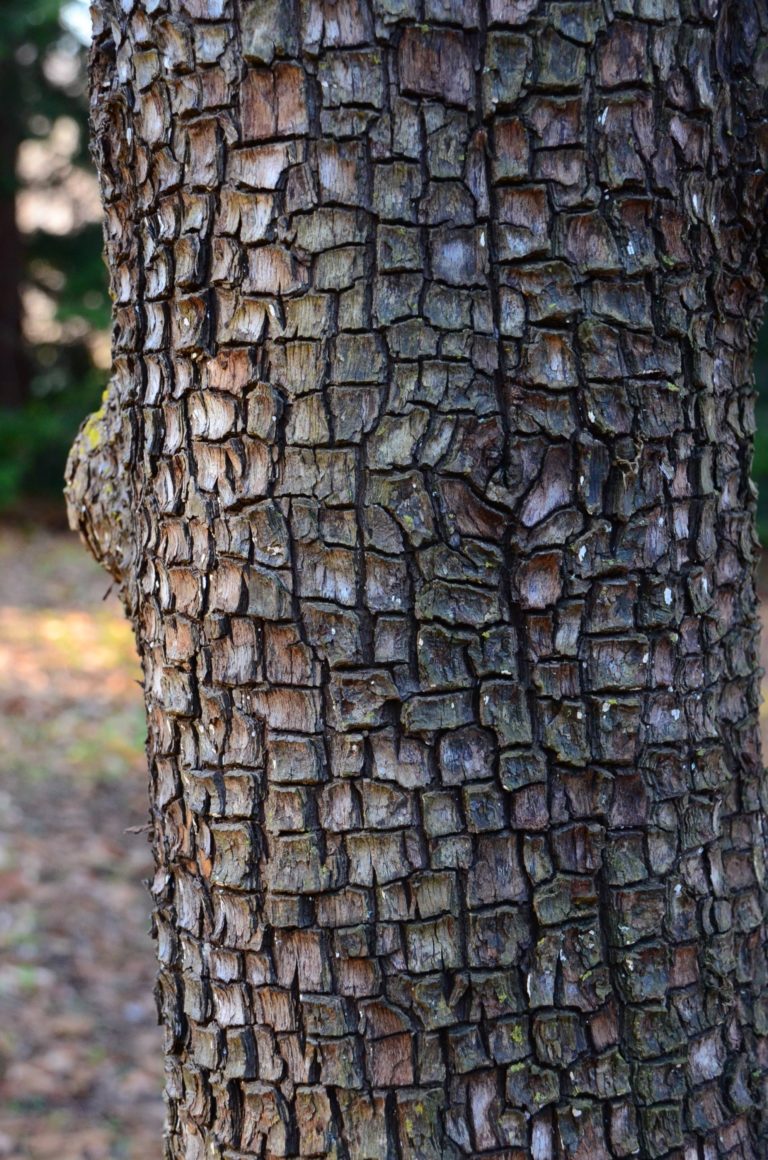
Juniperus deppeana ‘McFetters’ (alligator bark juniper) is in the Conifer Slope. It is easily overlooked solely due to the dwarfing presence of its neighbor: Sequoiadendron giganteum ‘Hazel Smith’ (giant sequoia). This plated bark seems to split into smaller pieces as the tree ages. Younger and thus smaller branches are mostly smooth with the square plates forming in sections, like grey scale.
These trees and their bark are all within reach of your fingertips on your next visit to Wave Hill. Remember to stay out of garden beds—if there is a plant in the ground, best not to step on it. Turf (lawn grass) and pathways are perfect for feet and wheels.
If you feel like you’ve contracted bark fever from a “bark bite” check out Bark: A Field Guide to Trees of the Northeast by Michael Wojtech to take a much deeper dive. It is hands-down the best book on bark I know.
